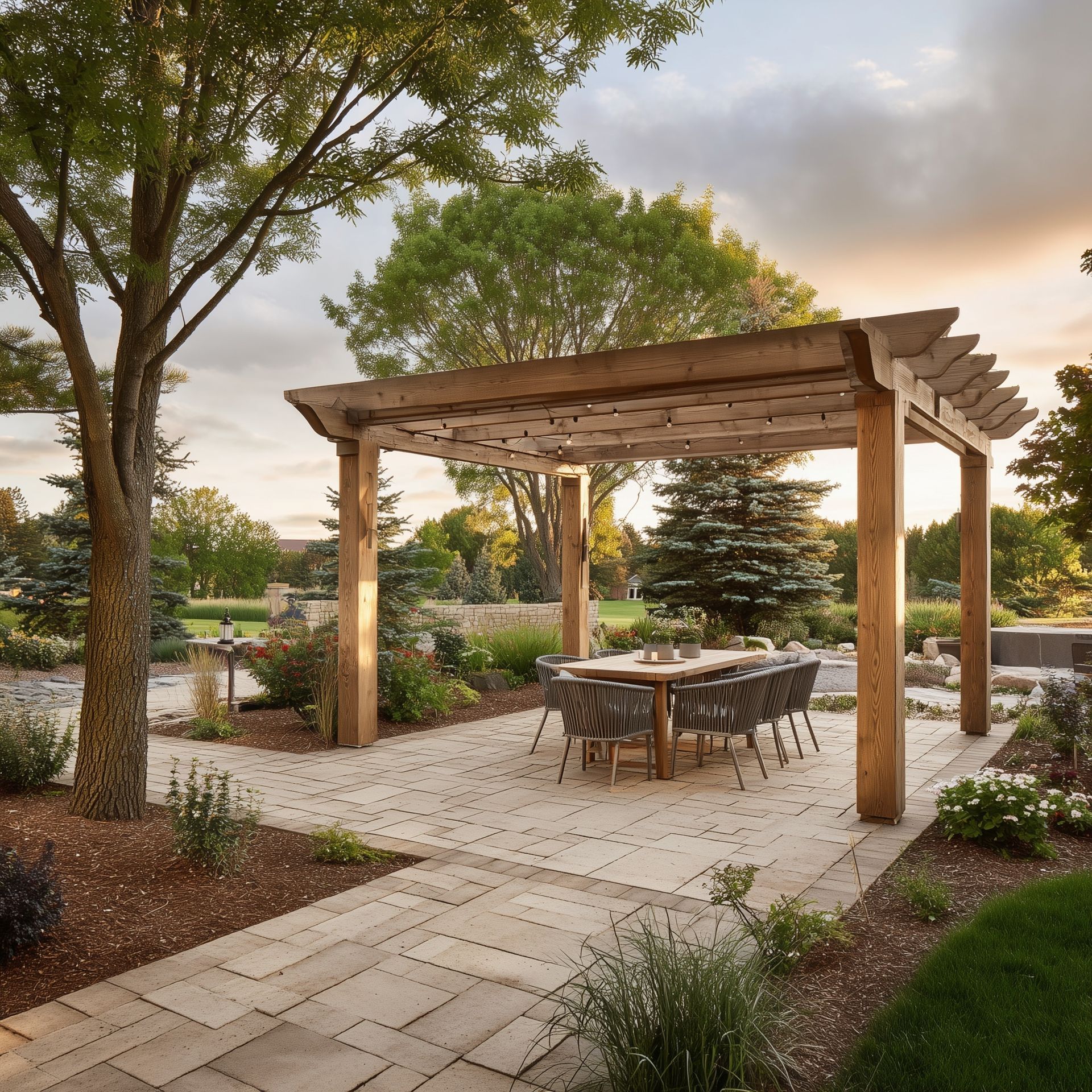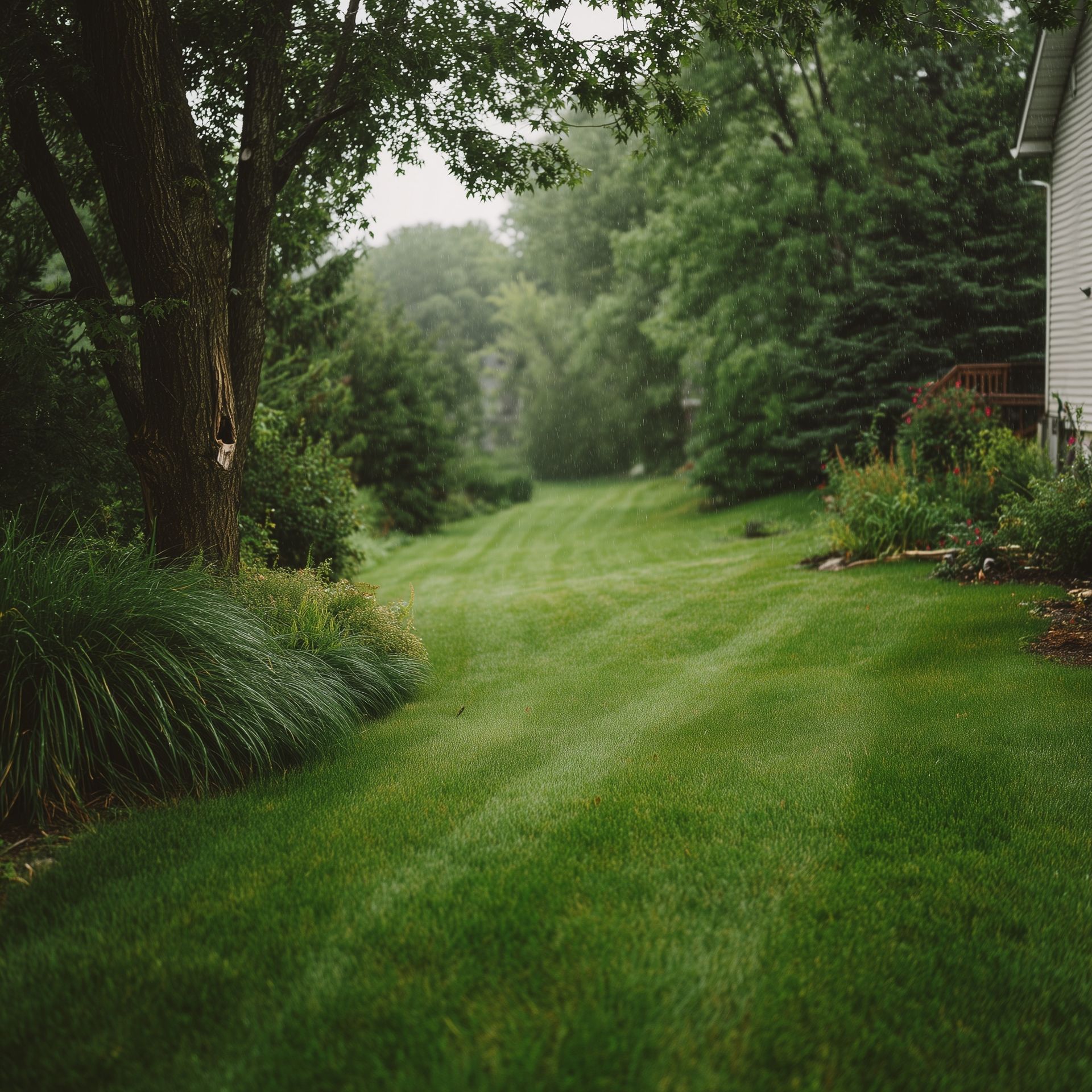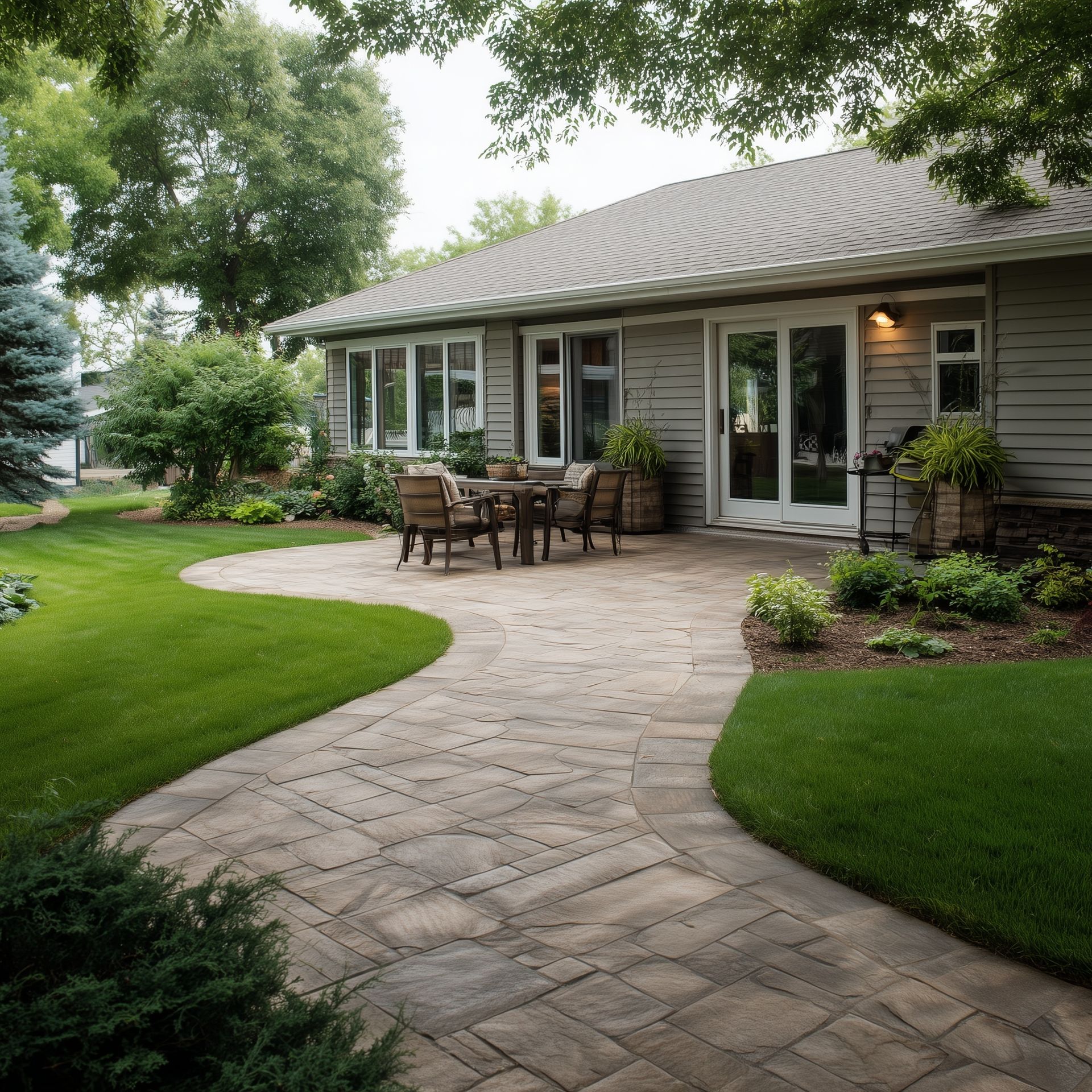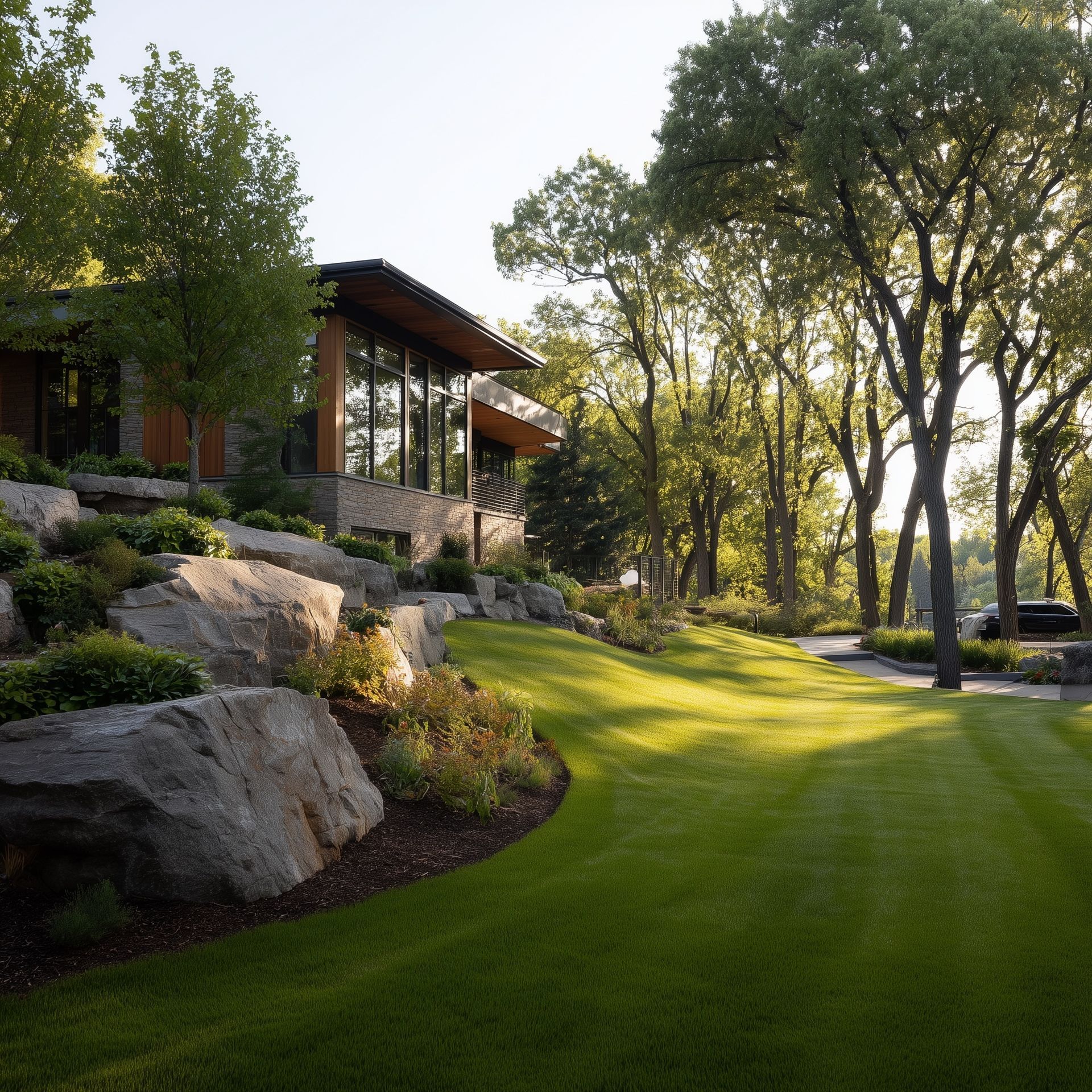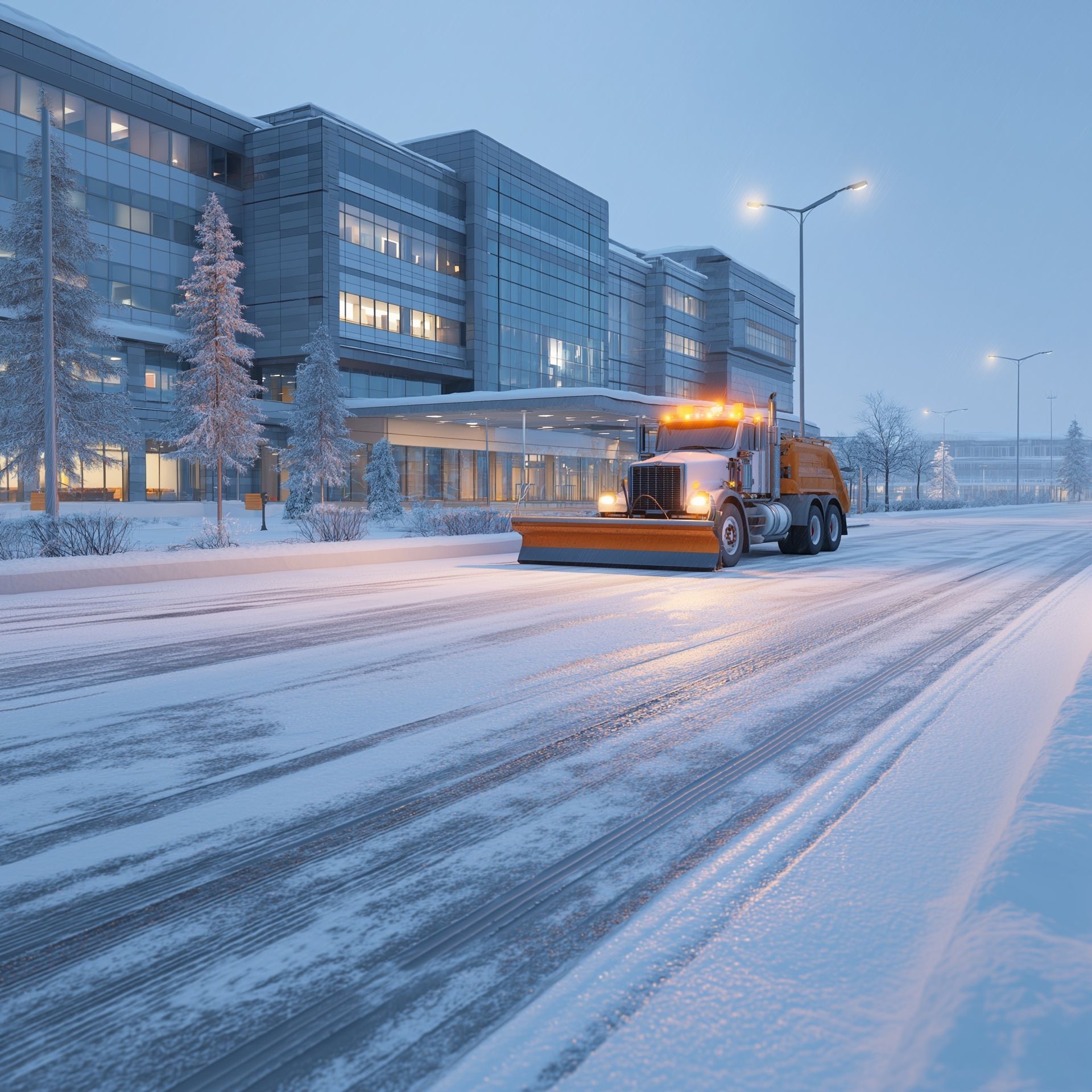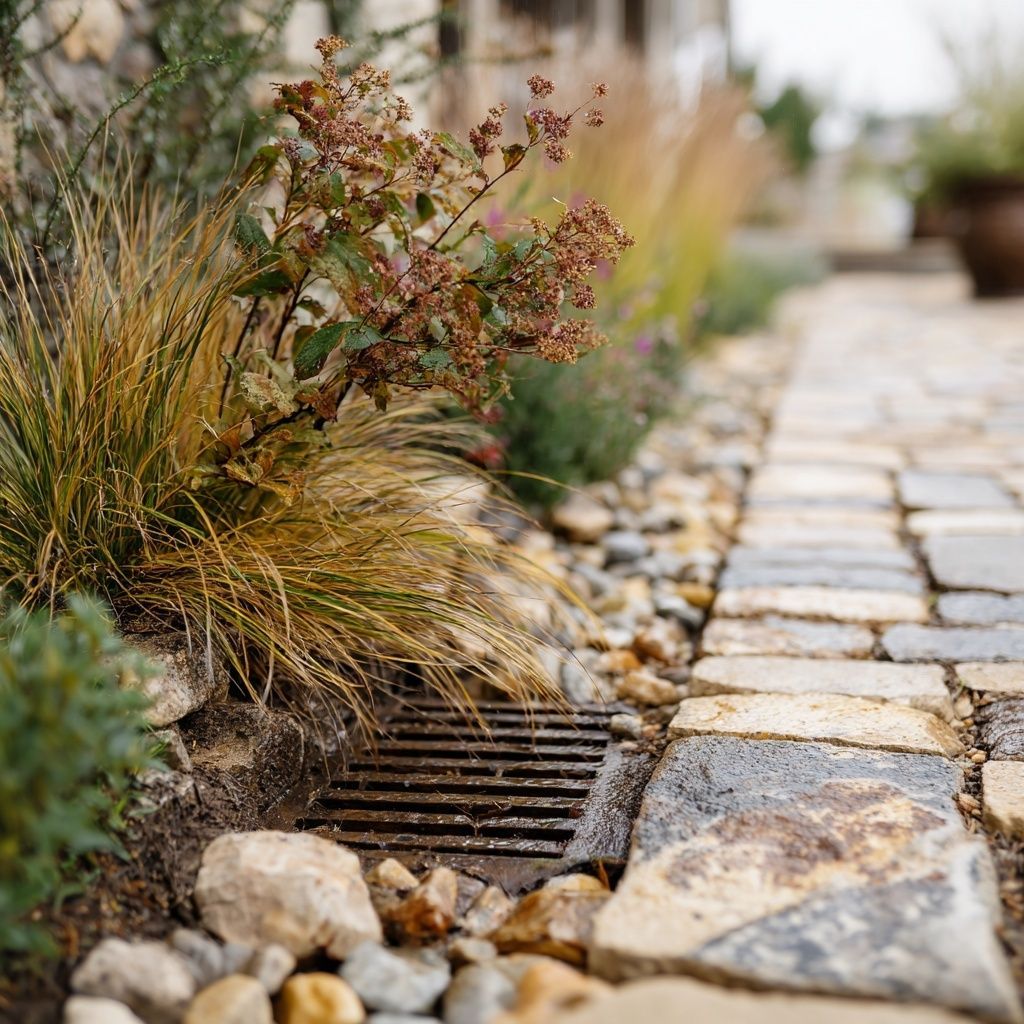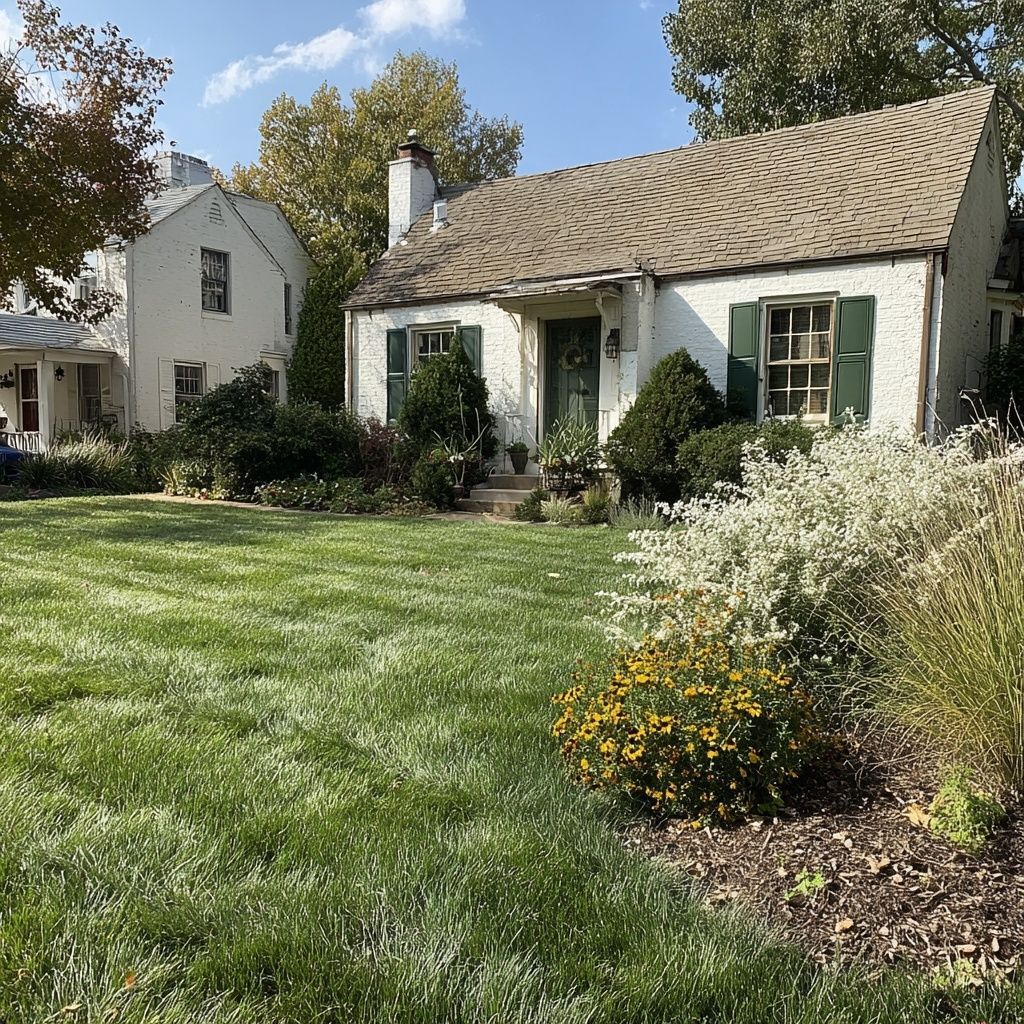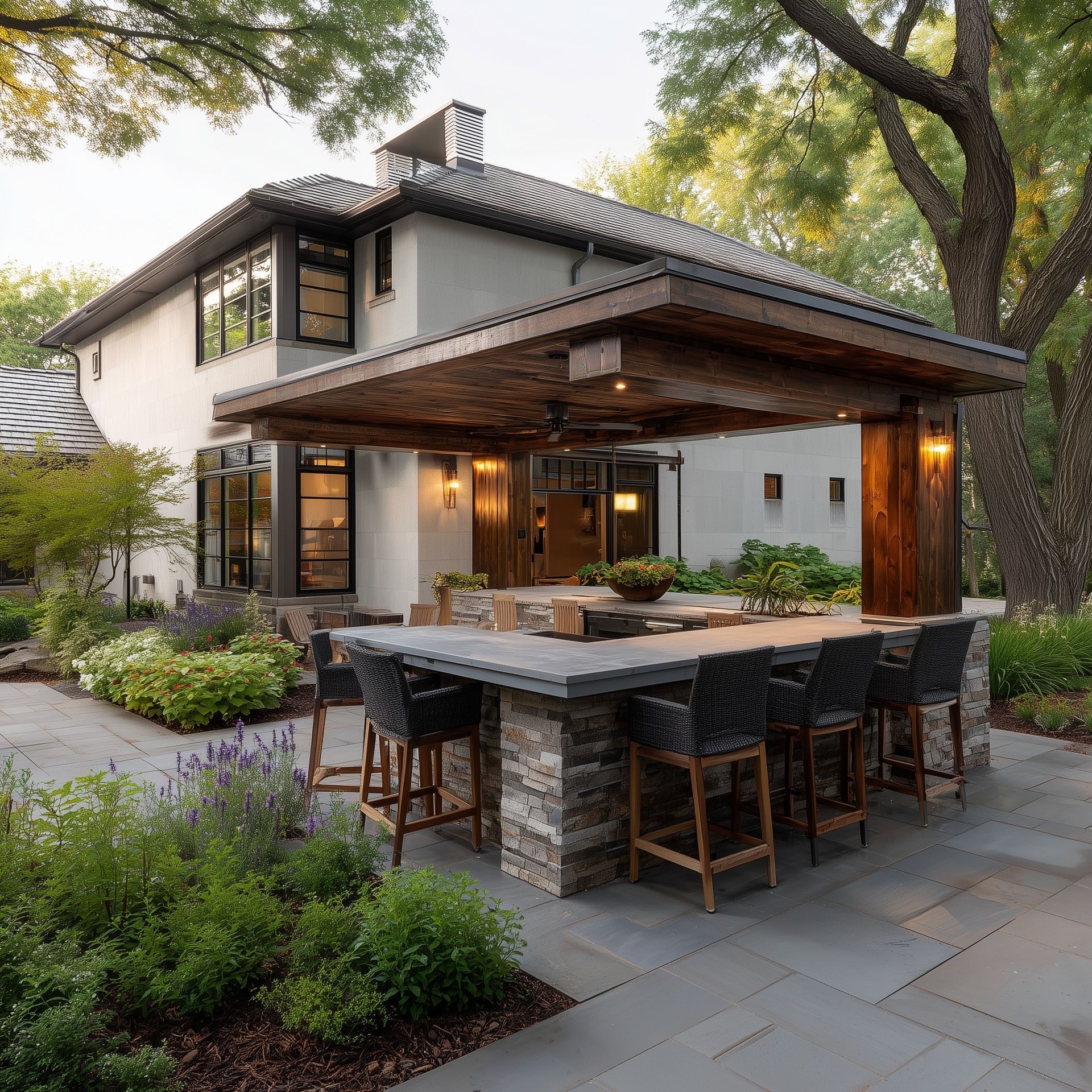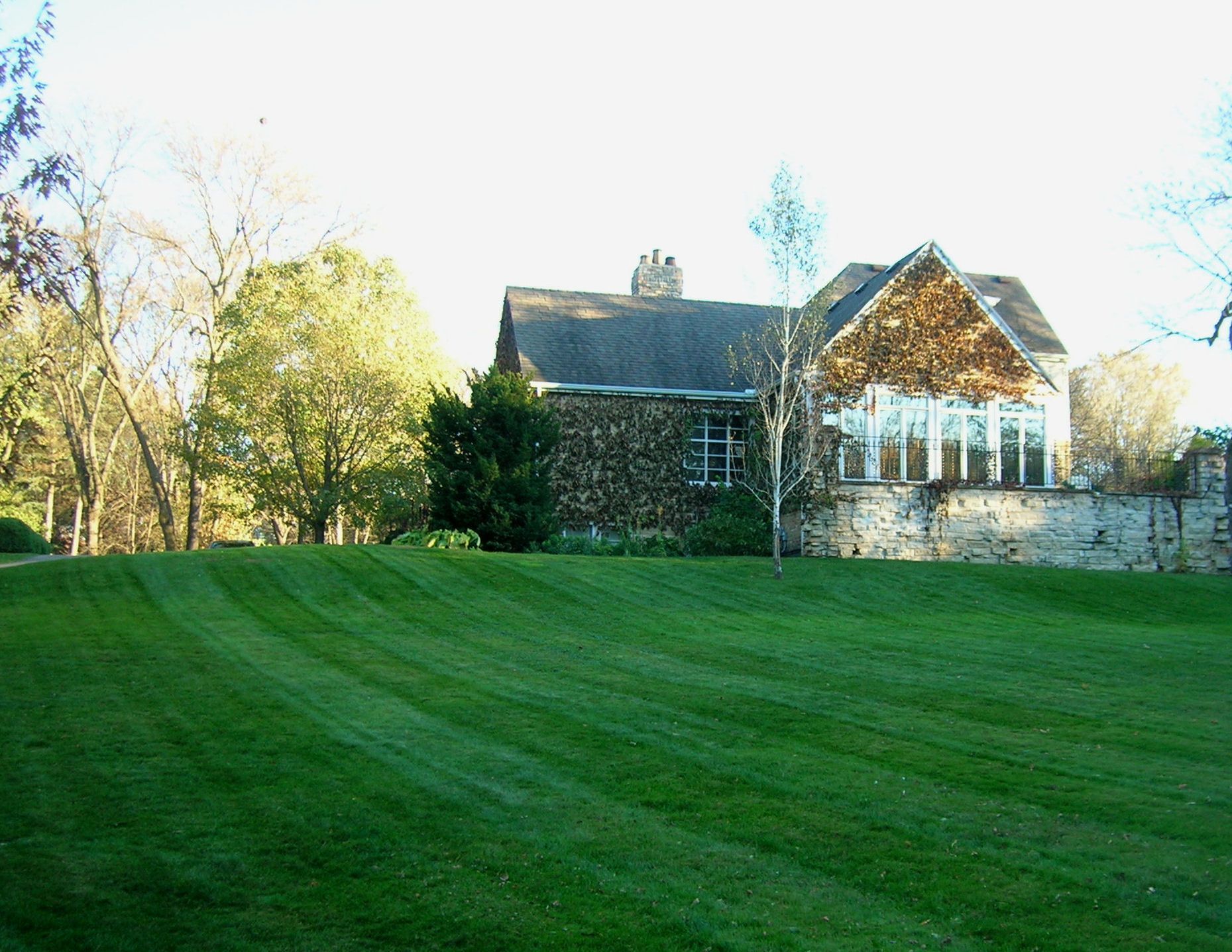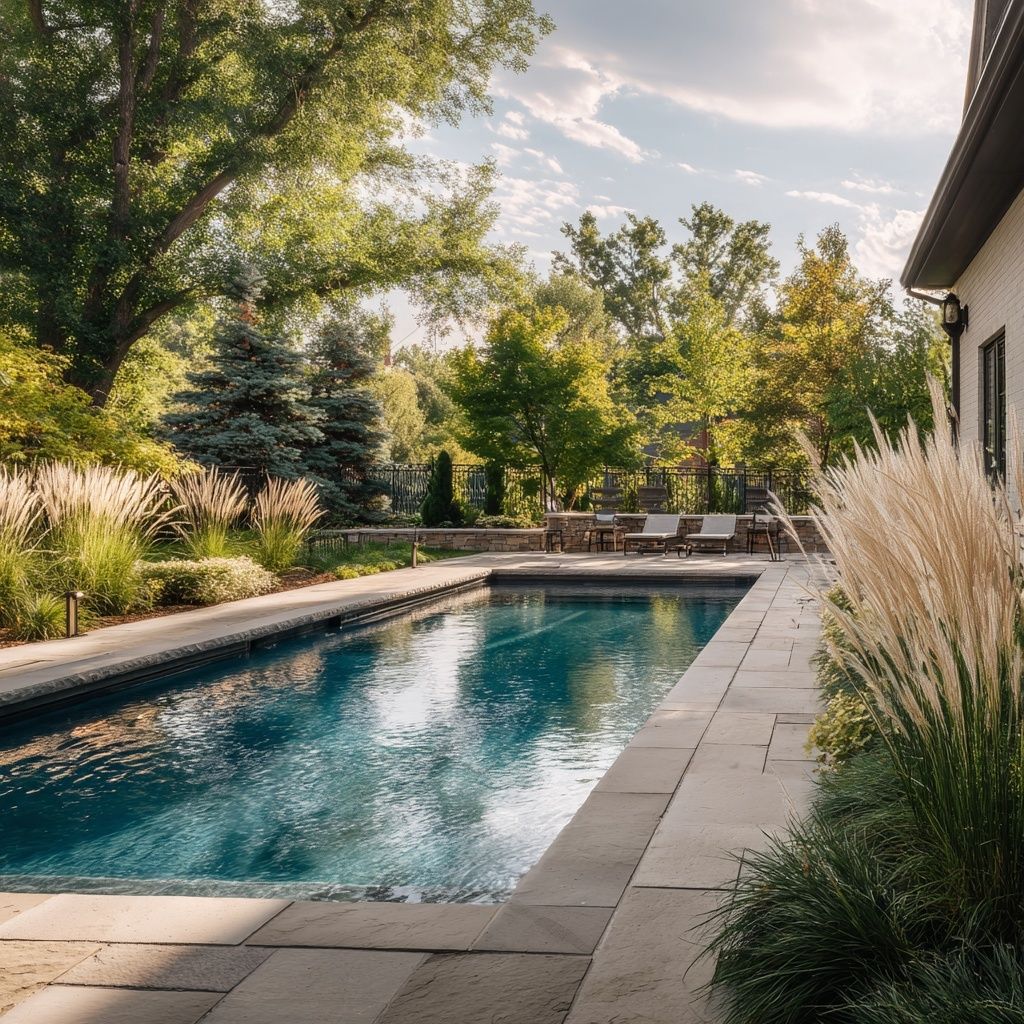French Drains That Actually Work in Medina’s Clay Soil

Why Typical French Drains Fail in Medina
You can’t talk about drainage in Medina without talking about clay. It’s what I run into on nearly every job here. Medina has some of the heaviest clay soils in the Twin Cities, and that soil type changes everything about how water moves—or really, how it doesn’t move. Homeowners call me all the time about soggy lawns, sump pumps that run constantly, or patios that heave and crack after a winter freeze. Nine times out of ten, the real problem isn’t surface water. It’s what’s happening underground.
Clay soil is made up of tightly packed fine particles. It doesn’t let water drain through the way sandy or loamy soil does. Once it gets saturated, it stays that way. I see this constantly: a homeowner installs a “standard” French drain, and a year later, it’s clogged or frozen solid. The rock backfill holds moisture that has nowhere to go, the pipe fills with sediment, and the system just stops working.
The truth is, the average French drain design that might work great in other parts of Minnesota doesn’t hold up in Medina. The trench is often too shallow, the backfill too compacted, or the perforated pipe lacks a silt sock to keep out fine sediment. That’s why a lot of systems that look fine on paper end up failing after just a couple of freeze-thaw cycles.
I’ve seen some of these drains replaced two or three times because the installer didn’t understand the soil conditions. The real fix is not a bigger drain, it’s a smarter design that works with the clay instead of fighting it. That’s where drain tile systems come in.

This is paragraph text. Click it or hit the Manage Text button to change the font, color, size, format, and more. To set up site-wide paragraph and title styles, go to Site Theme.
The Real Payoff: Drier Lawns and Longer-Lasting Patios
After we finish a drainage project, the first thing homeowners notice is how their yard feels. It’s not just about removing puddles—it’s about getting back usable space. Medina yards with heavy clay can stay soggy for days after even a light rain. Once we install proper drain tile and grading, those lawns dry out faster, the ground firms up, and the property starts to work the way it should.
The benefits go far beyond comfort. Proper drainage protects everything you’ve invested in your landscape. Without it, supersaturated soil expands and contracts through each freeze-thaw cycle, putting pressure on patios, pool decks, and retaining walls. That’s why you see pavers shifting, steps settling, and even cracks forming in concrete. When the subsoil stays dry, those structures last decades instead of years.
Drainage also takes pressure off your home’s foundation. I’ve been called to houses where sump pumps were running nonstop because the soil was too dense to let water move naturally. Once we installed drain tile to redirect that flow, the pumps barely kicked on anymore. It’s a quieter, drier, and far more stable environment overall.
Even for families, the difference is immediate. Kids can actually play in the yard without sinking into mud, dogs stop tracking paw prints through the house, and mowing doesn’t leave tire ruts. In Medina’s newer developments, where the topsoil was stripped and compacted during construction, fixing drainage can completely change how a property feels.
A good drainage plan isn’t something you notice every day, but you’ll feel the difference every time it rains. Before investing in new landscaping, patios, or walls, it’s worth having the drainage evaluated first. Fixing it now means you won’t be rebuilding later.
FAQs
What’s the difference between a French drain and drain tile?
A French drain is more extensive—it uses a deeper trench lined with rock and a perforated pipe to move large volumes of water. Drain tile, on the other hand, is typically a 4-inch perforated corrugated or PVC pipe covered with a silt sock and buried shallower. I use drain tile in Medina’s heavy clay soils when we’re running hundreds of feet of pipe, because it’s more cost-effective. The next step up is adding a sandy backfill mix around the pipe, which helps water move faster through clay. French drains are great for high-saturation problem spots, but most lawns benefit more from strategic drain tile runs.
Why is Medina’s clay soil such a challenge for drainage?
Clay soils are made up of tiny, tightly packed particles that hold water instead of letting it drain. Even when your yard has proper grading, the ground can stay soggy for days after a rain. In Medina, that means muddy patches, constantly running sump pumps, and lawns that never fully dry out. Over time, those saturated conditions can cause patios and footings to shift or crack. Installing perforated drain tile below the surface gives that trapped water a place to go. Once it’s in the pipe, gravity takes it out and away from your yard—making it usable again instead of a swampy mess.
Can a French drain fix water problems near my patio or pool?
Yes, but it has to be designed as part of the whole drainage system, not just dropped in afterward. Around patios and pools, the goal is to keep water from getting underneath the structure where it can freeze and cause heaving or cracking. I’ll often pitch the patio surface about one-eighth to one-quarter inch per foot to shed water properly, then install drain tile or a French drain below or along the edge for insurance. For pools, slot or channel drains are sometimes needed between the house and the deck to catch runoff from both directions and keep that water away from the liner and foundation.
What kind of maintenance does a French drain need once it’s installed?
If it’s designed and installed correctly, very little. A properly lined pipe with a silt sock and solid backfill will handle years of runoff without clogging. The biggest thing is making sure your downspouts, sump pump lines, and grading still send water where it’s supposed to go. Over time, leaves or soil can build up over the drain outlet and slow things down, so I recommend checking that outlet once or twice a year. In Medina’s clay soils, it’s worth the effort—keeping water flowing smoothly means you’re protecting your lawn, your hardscapes, and your home’s foundation.
Do I need both grading and a French drain to solve yard drainage issues?
In most cases, yes. I like to think of grading as the first line of defense—it moves surface water where you want it to go. A French drain or drain tile is the second layer, catching any water that still seeps into the ground. When I regrade Medina lawns, I use transits to make sure the slope is perfect and then add underground drainage where the soil just won’t cooperate. Clay doesn’t drain naturally, so combining both systems gives you the best of both worlds: water moving away on the surface and through the soil. That’s how you get a dry, functional yard that lasts.
